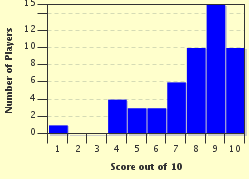Quiz Answer Key and Fun Facts
1. It is an axiom that any chain is only as strong as its weakest link. Approximately what percentage of a fishing line's test strength can the fisherman expect to lose by inserting a knot?
2. All fishing knots must be drawn extremely tightly to be effective. Most anglers use water or saliva to lubricate the knots as they tighten them but which of the following is the best lubricant?
3. Which of the following is the most appropriate knot for joining two lines of very similar or the same diameters?
4. The arbor knot, also known as the Canadian jam knot, is used to attach the backing or main line to which important component of the fisherman's tackle set-up?
5. Which of the following knots is often used to connect the main running line to the shock leader?
6. This is a knot tied into the line and perfectly suited for attaching terminal tackle items such as paternosters. This knot is called a ____ loop.
7. The Duncan knot is also known by another name which alludes to the fact that it can be used in the place of virtually any other knot?
8. When tied correctly, which very attractive looking knot proves ideal for joining two lines of differing diameters such as running line to shock leader?
9. This knot, popular with tuna fisherman from a far western US state, is recommended for use with speciality fluorocarbon lines?
10. Developed in the southern hemisphere, which of the following possesses great strength and is considered to be one of the most reliable of the higher breaking strain knots?
Source: Author
SisterSeagull
This quiz was reviewed by FunTrivia editor
WesleyCrusher before going online.
Any errors found in FunTrivia content are routinely corrected through our feedback system.

